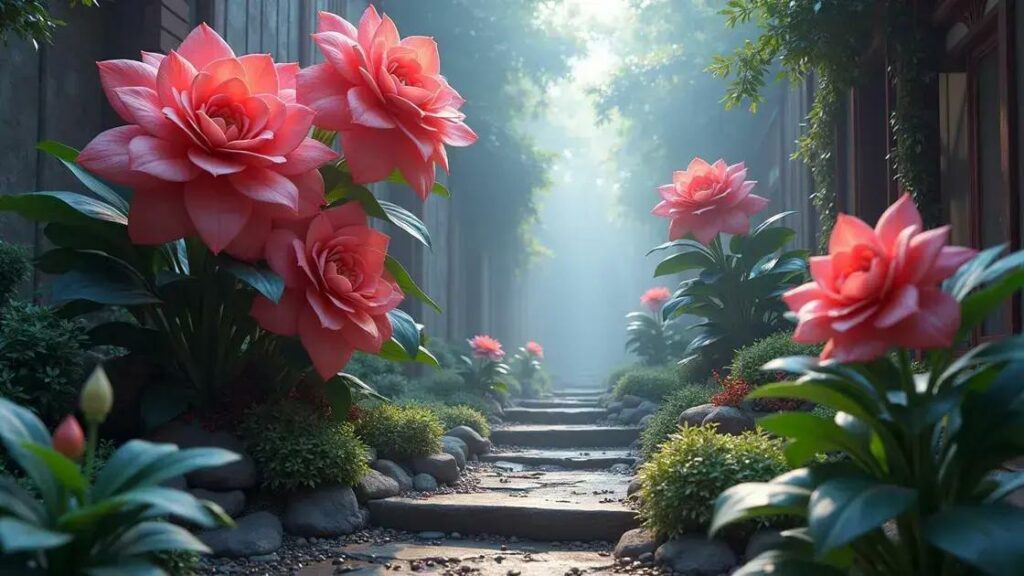How to take care of a hoya plant is a question many plant lovers are asking. With their beautiful leaves and fragrant blossoms, hoyas are not just easy to care for but also highly rewarding. In this guide, we’ll explore essential tips to ensure your hoya thrives and blooms beautifully all year round.
Table of Contents
ToggleWatering schedule for optimal hoya growth
How to take care of a hoya plant effectively involves understanding its watering needs. A proper watering schedule is crucial for optimal hoya growth, as it prevents overwatering and encourages healthy root development. Let’s dive into the best practices for watering your hoya plant.
Understanding your hoya’s watering needs
Watering requirements for hoyas vary based on the species, pot size, and environment. Here are a few key points to consider:
- Check the soil moisture before watering.
- Water more in spring and summer when the plant grows actively.
- Reduce watering during fall and winter when growth slows.
How to check if your hoya needs water
- Insert your finger about an inch into the soil.
- If the soil feels dry, it’s time to water.
- If it feels moist, wait a few days before checking again.
Best practices for watering your hoya plant
Follow these best practices to create an effective watering schedule for your hoya:
- Use distilled or rainwater whenever possible. Tap water can have chemicals that harm hoyas.
- Ensure the pot has drainage holes to prevent root rot.
- Water the plant thoroughly, allowing excess water to drain out.
Common issues related to watering
Understanding potential problems can prevent setbacks. Here are some issues you might encounter:
- Overwatering: This can lead to yellow leaves and root rot.
- Underwatering: Leaves may become wrinkled or drop.
For more tips on maintaining indoor plants, consider exploring indoor gardening techniques.
Conclusion
Maintaining a consistent watering schedule tailored to your hoya’s needs is key to its health. By observing your plant and adjusting as necessary, you’ll ensure it flourishes beautifully.
Soil requirements for a thriving hoya plant

Soil requirements for a thriving hoya plant are essential for promoting healthy growth. Choosing the right type of soil creates a suitable environment for roots to develop and flourish. Let’s explore the best soil options for your hoya.
Key characteristics of hoya-friendly soil
When selecting soil for your hoya plant, consider the following characteristics:
- Good drainage to prevent waterlogging
- Rich in organic matter to support nutrient needs
- Light and airy texture to allow oxygen flow
Recommended soil mixtures for hoyas
It’s beneficial to use a well-draining soil mix specifically formulated for hoyas. Here are some recommended blends:
- Cactus mix: Great for drainage and aeration.
- Orchid bark: Provides excellent airflow and prevents compacting.
- Peat-based mix with perlite: Helps retain moisture while allowing drainage.
Importance of pH levels
The pH level of the soil also plays a significant role in your hoya’s health. Aim for a pH between 6.0 and 7.0, which is slightly acidic to neutral. Maintain proper pH to optimize nutrient absorption.
Signs of improper soil conditions
Recognizing early signs of soil issues can help you address them timely:
- Yellow leaves: May indicate poor drainage or nutrient deficiency.
- Poor growth: Could be a sign of compacted soil affecting root health.
For additional insights into plant care, consider exploring indoor gardening techniques.
Conclusion
Using the right soil requirements for a thriving hoya plant ensures its health and vitality. By choosing appropriate soil blends and monitoring conditions, your hoya will flourish beautifully.
Sunlight exposure and care tips for hoyas
Sunlight exposure and care tips for hoyas are essential for their growth and thriving blooms. Understanding your hoya’s light requirements helps you create the perfect environment for it to flourish.
Optimal sunlight conditions for hoyas
Hoya plants thrive in bright, indirect light. Here’s how to ensure they receive the right amount:
- Avoid direct sunlight, which can scorch the leaves.
- Place them near east or west-facing windows for optimal light exposure.
- In low-light conditions, hoyas can tolerate some shade but will grow slower.
Identifying light-related issues
Recognizing when your hoya isn’t receiving enough or too much light is crucial:
- Too much light: Yellowing leaves or scorched spots indicate sunburn.
- Insufficient light: Stretched stems or sparse foliage are signs of inadequate exposure.
Care tips for maintaining your hoya plant
Along with proper sunlight exposure, these care tips will help your hoya thrive:
- Rotate the pot regularly to ensure even light distribution.
- Dust the leaves occasionally to maximize light absorption.
- Consider supplementing with grow lights during darker months.
For additional insights into plant care, consider exploring indoor gardening techniques.
Conclusion
By understanding the sunlight exposure and care tips specific to hoyas, you can create a thriving environment for your plant. Adequate light, combined with proper care, will reward you with beautiful foliage and flowers.
In conclusion
Taking care of a hoya plant requires attention to its unique needs, from proper watering and soil requirements to adequate sunlight exposure. By following these essential tips, you can ensure that your hoya thrives, displaying its vibrant foliage and beautiful blooms. Remember to observe your plant’s responses to care adjustments and maintain a suitable environment. For more insights, check out tips on enhancing your indoor garden.

